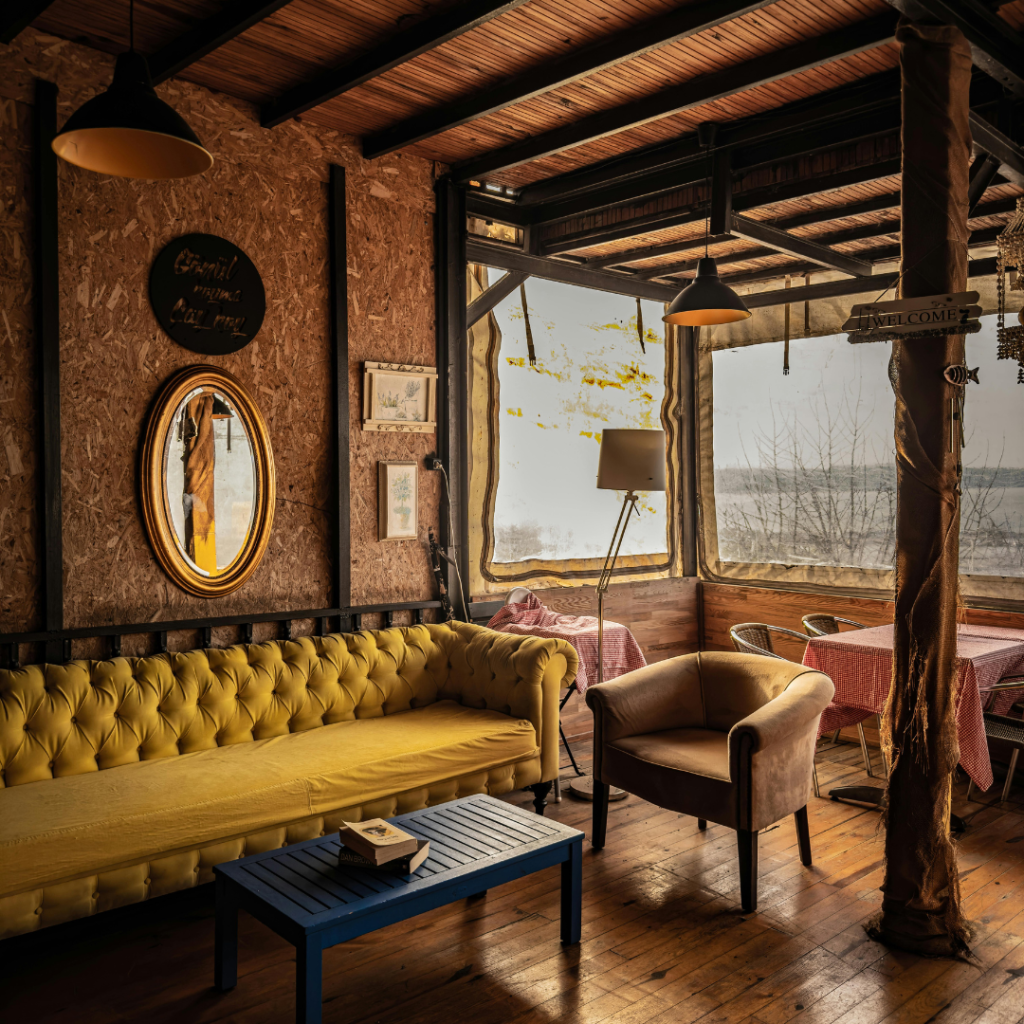Mixing modern and vintage home décor allows for a unique blend of styles that reflect personal taste while maintaining a cohesive look. To achieve this balance, one can layer modern pieces with vintage accents, creating a space that feels curated rather than chaotic. The juxtaposition between sleek lines and ornate details can introduce an element of surprise and charm in any interior.
Incorporating vintage finds into modern settings adds character and history to a home. Whether it’s a vintage armchair paired with a contemporary table or a retro rug under a modern sofa, these combinations can highlight the best of both worlds. Thoughtfully selecting pieces that complement each other ensures a harmonious design.
Ultimately, the goal is to create a space that feels both inviting and stylish, where modern aesthetics meet the warmth of vintage charm. Emphasizing personal favorites and meaningful items can enhance the overall appeal, resulting in an environment that tells a story and showcases individual style.
Core Principles of Mixing Modern and Vintage Home Décor
Successfully blending modern and vintage décor requires a thoughtful approach. Key aspects include balancing old and new elements, utilizing texture and contrast, and incorporating personal touches to create a distinctive space.
Balancing Old and New Elements
To achieve a harmonious look, adhere to the 80/20 rule. This principle suggests that 80% of a space’s décor should lean toward one style, while the remaining 20% can introduce the counterpart.
In a modern setting, vintage pieces can serve as focal points. For example, a contemporary sofa may benefit from an antique coffee table. Additionally, contrasting styles can provide depth, making each piece stand out without overwhelming the room.
Harnessing Texture and Contrast
Texture plays a crucial role in creating interest. A modern sofa with sleek lines juxtaposed against a vintage patterned rug adds dimension. Different materials, such as smooth metals alongside rustic woods, enhance the tactile experience.
Incorporate various textures to foster warmth, such as layering soft textiles with harder surfaces. This strategy enhances visual intrigue and helps the space feel balanced and inviting.
Creating Depth and Visual Interest
Depth in home décor can be achieved through layering. Use varying heights and shapes to draw the eye across the room. A tall, modern lamp beside a low vintage console table adds visual variety.
Incorporate items with different finishes, such as matte alongside gloss. This contrast creates a dynamic atmosphere, keeping the space engaging without cluttering it.
Personalizing with Family Heirlooms
Incorporating family heirlooms adds a personal touch and unique charm. These vintage pieces often hold sentimental value, serving as conversation starters.
Display them prominently, perhaps alongside modern décor, to highlight their significance. For instance, a vintage photo frame containing a cherished image can coexist with a sleek, modern shelf. Such personalizations reflect individual style and enhance the overall character of the space.
Choosing and Styling Key Modern and Vintage Elements
Combining modern and vintage décor involves thoughtful selection and arrangement of elements that complement each other. Awareness of key pieces and their context can create a cohesive aesthetic that feels intentional rather than haphazard.
Selecting Vintage Pieces and Antique Finds
When selecting vintage items, she should focus on quality and craftsmanship. Look for unique pieces that tell a story, such as a mid-century modern chair or a vintage side table. Thrift stores, antiques shops, and flea markets are excellent sources for these treasures.
Prioritize items that offer functionality and style. Vintage furniture can serve as a focal points. For instance, a charming vintage chandelier can transform a modern dining area. Be mindful of scale; ensure the vintage piece fits harmoniously with modern furniture.
Working with Modern Furniture and Accent Pieces
Modern furniture typically features clean lines and minimalistic designs. It can serve as a backdrop for vintage accents. Incorporate accent chairs or side tables that showcase bold colors or interesting textures. This creates visual contrast.
When mixing styles, she should maintain color cohesion. A modern sofa can be paired effectively with vintage cushions that echo its palette. Look for furniture that complements the vintage elements without overpowering them.
Incorporating Vintage Textiles and Fabrics
Textiles can bridge the gap between modern and vintage styles. Vintage linens, quilts, and throws add warmth and texture. Utilize these in spaces like the modern bedroom or living areas to soften hard surfaces.
Mix patterns thoughtfully. A vintage patterned throw can enhance solid modern bedding, creating a layered look. Incorporating these textiles allows for personality and comfort without overwhelming contemporary designs.
Blending Lighting: From Chandeliers to Pendants
Lighting plays a crucial role in achieving the desired ambiance. Vintage chandeliers can bring elegance to modern spaces. Install one above a dining table or in a living room to create a sophisticated focal point.
Pendants with a modern flair can also complement vintage aesthetics. Choose fixtures that add contrast and interest. For example, industrial-style pendants paired with vintage furniture can create a striking contrast, enhancing the overall décor.
Room-by-Room Strategies for Mixing Modern and Vintage
Mixing modern and vintage décor requires strategic choices in each room. Key elements such as color, texture, and functionality can harmonize diverse styles effectively.
Living Room: Defining Focal Points and Layers
In the living room, it is essential to establish a focal point. A modern coffee table can be paired with vintage bookcases or a retro sofa. Layering textures adds depth; combining a sleek leather couch with a vintage rug can create visual interest.
Use pillows and blankets to introduce color and comfort. Select cushions in modern patterns, while throws can feature vintage styles. This combination softens the modern look and enhances coziness.
Bookshelves are excellent for mixing styles. Display contemporary art alongside vintage books or curated collectibles. This juxtaposition tells a story and reflects personal taste, making the space inviting and engaging.
Kitchen and Dining: Integrating Storage and Entertaining Flair
In the kitchen and dining area, assessing storage solutions is crucial. Choose contemporary cabinets but accentuate them with vintage kitchenware displayed on shelves. Mixing finishes can bring character; consider matte black hardware alongside antique brass fixtures.
For dining tables, pairing a modern table with vintage chairs creates a striking visual contrast. The mix can be enhanced with varied materials, like a wooden table matched with metal chairs. Table settings should also blend styles, using modern plates and vintage glassware for an eclectic vibe.
Incorporating decorative elements, such as vintage serving dishes or bowls on open shelving, provides both functionality and charm. This approach showcases personality while ensuring the space remains practical for entertaining.
Bedroom and Bath: Enhancing Comfort and Vintage Charm
In bedrooms, comfort is paramount. A modern bed frame can be beautifully complemented by vintage quilts and layered blankets. Textiles in softer colors, such as muted pastels, can tie the room together.
Pillows play an important role in bridging modern and vintage elements. A mix of contemporary and antique designs can add a personalized touch. Additionally, incorporating a vintage nightstand with contemporary lamps creates an inviting atmosphere.
In the bath, a vintage vanity can serve as a focal point. Pairing it with modern fixtures balances elegance with functionality. Accessories, like vintage mirrors or ornate trays, elevate the design further, offering a blend of nostalgia and modern flair.
Finishing Touches and Advanced Decorating Tips
Incorporating finishing touches can elevate a space, blending modern and vintage styles seamlessly. Attention to accessories and thoughtful sourcing can enhance the aesthetic while promoting sustainability.
Showcasing Accessories and Decorative Details
Accessories play a crucial role in home décor. Carefully selected items such as vases, candles, and clocks can add personality to any room. A vintage vase filled with fresh flowers can provide a charming focal point.
Books arranged on shelves or as stack displays enhance both style and function. When using jewelry-like decor pieces, such as ornate candle holders, they can draw attention without overwhelming the space.
Sconces are another way to incorporate both styles. A vintage sconce can be paired with modern lighting to offer an eclectic yet cohesive look.
Sourcing Unique Finds from Flea Markets
Flea markets are treasure troves for unique home décor items. Vintage books and jewelry can often be found at reasonable prices, adding character to a space.
Homeowners should consider looking for boho chic items, as these often feature mixed materials, which blend well with modern pieces.
Creating a checklist before visiting a flea market can streamline the process. Items to consider include:
- Decorative vases
- Vintage clocks
- Artistic candle holders
Bringing cash and negotiating prices can also lead to better deals.
Sustainable Choices and Eco-Friendly Design
Sustainability is essential in modern decorating. Homeowners should consider eco-friendly materials such as reclaimed wood and recycled glass.
Incorporating plants can improve air quality while adding aesthetics. Unique vintage pots or terrariums can enhance this natural element.
Selecting furnishings from sustainable brands ensures a minimal environmental footprint.
It is also advisable to recycle or repurpose existing items instead of purchasing new accessories. This practice not only promotes sustainability but also encourages creative design solutions.

